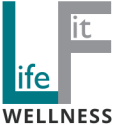Signs your herniated disc is healing
- Pain that centralises (moves from limbs toward your spine)
- Changing pain quality (from sharp/shooting to dull/achy)
- Improving movement capabilities and functional tolerance
- Longer periods between symptom flare-ups
- Decreasing medication needs
- Better sleep quality and morning comfort
- Visible changes on follow-up imaging studies
When you’re in the midst of herniated disc pain, even simple tasks like putting on socks or sitting through dinner can feel impossible. The nagging question often becomes: “Is this ever going to get better?”
The good news? Your body has remarkable healing abilities when it comes to herniated discs. Research shows that many disc herniations resolve without surgery, with one study finding that only 14.5% of patients ultimately needed surgical intervention.
“Will I know when healing is happening?” This is a question we hear frequently at our clinic. The recovery journey isn’t always obvious—some days feel better than others, and progress rarely happens in a straight line.
Understanding what’s actually happening inside your spine can help make sense of your symptoms. When a disc herniates, the inner gel-like material (nucleus pulposus) pushes through the outer ring (annulus fibrosus). As healing begins, your body launches an impressive response:
- Your immune system starts breaking down the herniated material
- Blood vessels grow into the area to support repair
- Inflammation gradually decreases
- The disc material often shrinks back or gets absorbed
MRI studies have documented this process, showing actual reduction in disc size—with an average 64% reduction in some patients! Even better, this natural healing often begins within weeks, not months or years.
In this article, we’ll explore the seven most reliable signs that your herniated disc is healing, based on clinical research and patient experiences. Whether you’re dealing with a cervical, thoracic, or lumbar herniation, these indicators can help you recognise when you’re moving in the right direction.
What Happens When a Herniated Disc Starts Healing?
The healing process of a herniated disc is actually quite fascinating when we look at what happens on a biological level. Many patients are surprised to learn that their body can naturally reabsorb disc material without surgical intervention.
When disc material herniates, it triggers an immune response. Your body recognises this material as “out of place” and activates several healing mechanisms:
- Inflammatory Phase: Initially, blood flow increases to the area, bringing immune cells that begin to break down the herniated material. This phase can be uncomfortable but is essential for healing.
- Resorption Process: Specialised cells called macrophages (essentially your body’s clean-up crew) begin to “eat away” at the herniated material. Research published in the Journal of Medicine demonstrates that this resorption can begin as early as 4 weeks after injury.
- Neovascularisation: New blood vessels grow into the area, supporting the clean-up process and bringing nutrients needed for repair. This happens more readily with transligamentous herniations (those that break through the posterior longitudinal ligament).
- Material Reduction: Over time, the size of the herniation physically shrinks. A 7-year follow-up study showed an average 64% reduction in disc size on MRI scans in patients who didn’t have surgery!
“But how long will this take?” This is perhaps the most common question patients ask. While individual healing varies, research suggests:
- Initial regression may begin within 4-12 weeks
- Significant improvement often occurs within 3-6 months
- The process can continue for up to 1-2 years
Interestingly, larger herniations often show more dramatic resorption. This seems counterintuitive—you might think bigger herniations would be worse—but they actually expose more disc material to the immune system, potentially accelerating the clean-up process.
The physical changes happening during healing can be confirmed through imaging. Sequential MRI scans often show:
- Decreased size of the herniated fragment
- Reduced compression on nearby nerve roots
- Less inflammation in surrounding tissues
- Changes in the disc’s water content and signal intensity
These anatomical improvements don’t always correlate perfectly with symptom relief (which we’ll discuss in the next section), but they provide measurable evidence that healing is occurring, even when progress feels slow.
How Does Pain Change When Your Herniated Disc Heals?
Pain reduction is often the first and most welcome sign that a herniated disc is healing. However, this improvement rarely happens overnight—it typically follows specific patterns that can help you recognise positive changes.
The Centralisation Phenomenon
One of the most reliable indicators of healing is what physiotherapists call “centralisation” of pain. This means pain that has been radiating down your arm or leg begins to retreat toward your spine. For example:
- Week 1-2: Pain might extend from your lower back all the way to your foot
- Week 3-4: Pain now stops at your knee
- Week 5-6: Pain is limited to just your buttock and lower back
This retreat of pain is a positive sign! Research from the Annals of The Royal College of Surgeons confirms that centralisation often correlates with actual disc healing visible on imaging studies.
Intensity Changes
Another positive sign is when pain becomes less severe, even if it hasn’t changed location. Many patients describe this transition:
- Initially: Sharp, shooting, electrical pain (8-10/10 intensity)
- During healing: Dull, achy discomfort (4-6/10 intensity)
- Later stages: Intermittent soreness (2-3/10 intensity)
This shift from sharp to dull pain often reflects reduced pressure on nerve roots as inflammation decreases and the disc material retracts.
Predictable Pain Patterns
As healing progresses, pain becomes more predictable and less random. You might notice:
- Pain primarily after specific activities rather than constant pain
- Morning pain that improves with gentle movement
- Longer periods completely pain-free between flare-ups
“I used to hurt no matter what I did, but now I only feel it after sitting for hours,” is a common report from patients whose discs are healing.
The Pain Memory Challenge
An interesting aspect of disc recovery is that pain can linger even after physical healing has occurred. This “pain memory” happens because your nervous system becomes sensitised during injury.
Your brain might continue sending pain signals even after the physical pressure on your nerves has decreased. This is why some patients benefit from gentle movement and gradual activity increases—these help “retrain” the nervous system to recognise that movement is now safe.
What About Numbness and Tingling?
Changes in neurological symptoms also follow patterns:
- Consistent numbness often improves before tingling
- Intermittent tingling may temporarily increase as nerves “wake up”
- Muscle weakness typically takes longest to resolve
Many patients report that strange sensations like “pins and needles” actually increase briefly during healing phases. This paradoxical increase in symptoms can actually be positive—it often means compressed nerves are receiving better blood flow and beginning to function more normally.
Can You Feel Better Even If the Disc Bulge Remains?
One of the most fascinating aspects of herniated disc recovery is the disconnect between what appears on imaging and how you actually feel. Many patients worry when told “your disc is still bulging” despite feeling significantly better.
Here’s the reality: you can experience substantial symptom relief even when your disc hasn’t fully retracted!
The Inflammation Factor
Much of the pain from a herniated disc comes from inflammation, not just physical pressure. Research published in the European Orthopaedic Review shows that as inflammation decreases, pain often improves dramatically—even if the disc material hasn’t fully reabsorbed.
This explains why:
- Some patients with large herniations have minimal symptoms
- Others with small bulges experience severe pain
- Anti-inflammatory approaches often provide relief
When the inflammatory chemicals around your nerve roots decrease, you may feel better long before the disc material has completely resorbed.
The Adaptation Process
Your nervous system is remarkably adaptable. Over time, nerves can adjust to minor compression if the acute inflammation has settled. This natural adaptation process means that:
- Nerves slightly displaced by disc material may regain normal function
- Mild compression that remains stable may become asymptomatic
- Your body creates “work-arounds” for the changed anatomy
“Think of it like a tree growing around a fence,” explains one spine specialist. “Initially, the fence pressing against the tree causes damage. But over time, the tree adapts its growth pattern to accommodate the fence.”
Size Doesn’t Always Matter
Several studies have followed patients with herniated discs using sequential MRIs. The findings show some surprising patterns:
- Large herniations often shrink substantially (up to 64% volume reduction)
- Small bulges might show minimal anatomical changes
- Symptoms improve in both groups at similar rates
In fact, research in BMJ Open demonstrates that many people with disc bulges visible on MRI have no symptoms whatsoever. This mismatch between imaging and symptoms is now well-established in spine research.
How to Know If Remaining Disc Material Is Problematic
While many disc bulges become asymptomatic, how can you tell if your remaining disc material needs attention? Watch for these patterns:
- Symptoms that plateau but remain significant
- Pain that centralises but then stops improving for months
- Persistent neurological signs like weakness or reflex changes
- Activities that consistently reproduce the same symptoms
These might indicate that the remaining disc material is still clinically relevant, whereas improving symptoms despite unchanged imaging usually suggests the healing process is working, just more slowly than you might hope.
Remember that healing timeframes vary widely—some patients improve within weeks, while others take a full year to see maximal improvement. Patience, while challenging, is often rewarded in disc herniation recovery.
When Should You Expect Movement to Improve?
Movement restoration is a key indicator that your herniated disc is healing, but the timeline varies considerably from person to person. Understanding typical recovery patterns can help you recognise progress and avoid discouragement.
The Movement Recovery Timeline
Movement typically returns in a predictable sequence:
- First 2-4 weeks: Basic movements become less painful (walking short distances, gentle turning)
- 1-2 months: Moderate movements improve (longer walking, light household tasks)
- 2-4 months: More demanding movements become accessible (bending, lifting light objects)
- 4-6+ months: Return to most normal activities with proper technique
This timeline accelerates or slows based on several factors, including your age, overall health, the size and location of your herniation, and how carefully you follow treatment recommendations.
Which Movements Return First?
The return of pain-free movement typically follows a pattern:
- Walking: Often improves early, especially short distances on flat surfaces
- Standing: Usually becomes more comfortable before sitting
- Rotation: Gentle turning motions may become easier as nerve inflammation reduces
- Forward bending: This often improves later, as it places more stress on discs
- Lifting: Typically the last movement to normalise
According to Medical News Today, this pattern reflects how different movements affect pressure on the discs and adjacent nerve roots.
Simple Tests to Track Your Progress
You can monitor your movement improvements with these simple checks:
Morning Flexibility Test
- Upon waking, note how stiff your back feels
- Track how long it takes to “loosen up” each morning
- As healing progresses, this morning stiffness period should shorten
Seated Tolerance Test
- Time how long you can sit comfortably
- Note when and where discomfort begins
- Improvement in seated tolerance is often a reliable healing sign
Straight Leg Raise Check
- Lying on your back, slowly raise one leg while keeping it straight
- Note the angle where pain begins
- Increasing angles over time suggest nerve root irritation is decreasing
The “Good Pain” vs. “Bad Pain” Distinction
As movement returns, understanding different types of discomfort becomes important:
- “Good pain”: Mild soreness that dissipates quickly, doesn’t worsen with continued activity, and doesn’t persist the next day
- “Bad pain”: Sharp, shooting, or electrical sensations that increase with activity, spread to limbs, or persist/worsen after resting
The gradual shift from “bad pain” to occasional “good pain” with movement represents progress in your disc healing journey.
What If Movements Aren’t Improving?
If your movement capabilities plateau for more than 3-4 weeks, consider:
- Whether you’re following optimal loading principles (not too much, not too little activity)
- If your sleep position might be aggravating the condition
- Whether your current treatment plan needs adjustment
- If additional imaging or specialist consultation might be warranted
Movement improvement rarely follows a perfectly linear path. Most patients experience “two steps forward, one step back” patterns, with good days and more challenging days. The overall trend matters more than day-to-day fluctuations.
Conclusion
Recognising the signs that your herniated disc is healing provides both reassurance and motivation during what can be a challenging recovery journey. The good news is that research consistently shows most disc herniations improve without surgery.
Remember these key signs of healing:
- Pain that centralises (moves from limbs toward your spine)
- Changing pain quality (from sharp/shooting to dull/achy)
- Improving movement capabilities and functional tolerance
- Longer periods between symptom flare-ups
- Decreasing medication needs
- Better sleep quality and morning comfort
- Visible changes on follow-up imaging studies
Your recovery timeline remains highly individual. Some people experience significant improvement within weeks, while others follow a more gradual course over several months. What matters most is the overall trend toward improvement, even with occasional setbacks along the way.
If your recovery seems to plateau for an extended period, or if you develop new or worsening symptoms, seeking additional medical advice is appropriate. A physiotherapist or spine specialist can assess your specific situation and determine whether your current approach needs adjustment.
The body has remarkable healing capabilities when given the right support. By recognising the signs of disc healing, following appropriate treatment recommendations, and making helpful lifestyle modifications, you can optimise your recovery and return to the activities that matter most to you.
Frequently Asked Questions
How long does it take for a herniated disc to heal completely?
Healing timeframes vary widely. Research shows initial improvement often begins within 4-12 weeks, with significant recovery for most patients by 3-6 months. The full resorption process can continue for 1-2 years. Factors affecting healing speed include the size and location of the herniation, your age, overall health status, and how well you follow treatment recommendations.
Can a herniated disc heal without surgery?
Yes! Multiple studies show that 65-85% of herniated discs heal without surgical intervention. MRI studies have documented the natural resorption of disc material, with an average 64% reduction in disc size in one long-term study of patients treated without surgery.
Will my herniated disc come back after it heals?
Once a disc herniation heals, recurrence at the same level is possible but not inevitable. Research suggests that proper movement mechanics, core strength, lifestyle modifications, and avoiding excessive loading can significantly reduce the risk of recurrence. Some studies show recurrence rates of about 5-10% per year, but this varies based on individual factors and behaviours.
Is exercise good or bad for a herniated disc?
The right type and amount of exercise can significantly help disc healing. Research supports a graduated approach that begins with gentle, pain-free movement and gradually progresses as symptoms allow. Activities that create excessive compression or shear forces should be temporarily modified or avoided. A physical therapist can help design an appropriate exercise programme for your specific condition.
How do I know if my disc herniation needs surgery?
Surgery is typically considered when:
- You have progressive neurological deficits (worsening weakness, loss of bladder/bowel control)
- Severe pain persists despite appropriate conservative treatment for 6-12 weeks
- Specific herniation types create structural problems that won’t respond to conservative care
Even with these indicators, the decision should be individualised and made in consultation with appropriate medical specialists.
Can I speed up the disc healing process?
While you can’t rush your body’s natural healing timeline, you can optimise the process by:
- Following appropriate activity modifications
- Maintaining good hydration and nutrition
- Using proper body mechanics during daily activities
- Adhering to recommended treatment protocols
- Getting adequate sleep
- Managing stress
- Avoiding smoking and excessive alcohol
What makes a herniated disc worse?
Activities and positions that increase disc pressure can potentially slow healing or exacerbate symptoms. These commonly include:
- Prolonged sitting, especially with poor posture
- Heavy lifting, particularly with improper technique
- High-impact activities during acute phases
- Positions that increase pain or cause symptoms to move toward the extremities
- Smoking, which reduces blood flow and nutrient delivery to discs
- Poor sleep positions that increase disc pressure
How will I know if my disc isn’t healing properly?
Signs that warrant additional medical attention include:
- Pain that isn’t centralising after 4-6 weeks of appropriate treatment
- New or worsening neurological symptoms (weakness, numbness, tingling)
- Bowel or bladder changes
- Severe pain that prevents sleep or basic functions despite appropriate treatment
- Symptoms that initially improved but then worsen significantly












